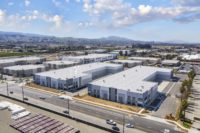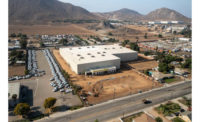After a year of union walkouts and protests by truckers opposed to California labor law AB5, the Port of Oakland expects cargo volumes to rise this year and is focused on preparing for the next generation.
Cold storage in the city known as the bright side of the Bay is largely driven by the port which loads and discharges more than 99% of the containerized goods moving through Northern California. Oakland's cargo volume makes it the ninth busiest container port in the United States based on 2021 data.
The Port of Oakland oversees nearly 20 miles of waterfront including Jack London Square, and a publicly owned utility. Together with its business partners, the port supports more than 84,000 jobs.
During his "State of the Port 2023" in February, Port of Oakland Executive Director Danny Wan said the 96-year-old port has a “once-in-a-lifetime opportunity” to apply for government funds to make infrastructure upgrades like electrification of the seaport and land use planning to ensure continued growth of the maritime business.
The California Transportation Commission late last year committed $175 million toward realigning and reconstructing a primary trucking and access gateway into the port. And the port is taking steps toward a sustainability, including a $2 million contract for the design of renewable energy infrastructure with solar power generation and battery storage systems.
“We need to build for the next generation,” Wan said. “It is a future port that not only moves more cargo, carries more passengers and attracts more visitors, but that growth will be achieved with zero emissions technology.”
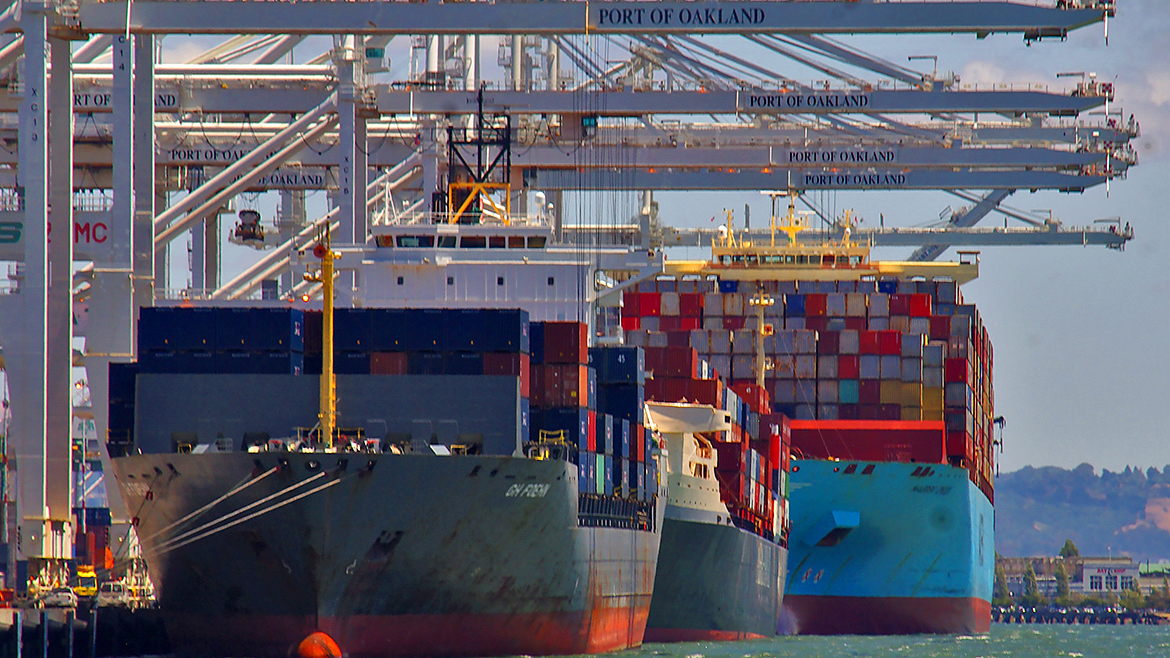 Oakland's cargo volume makes it the ninth busiest container port in the United States based on 2021 data. Image courtesy of Port of Oakland.
Oakland's cargo volume makes it the ninth busiest container port in the United States based on 2021 data. Image courtesy of Port of Oakland.
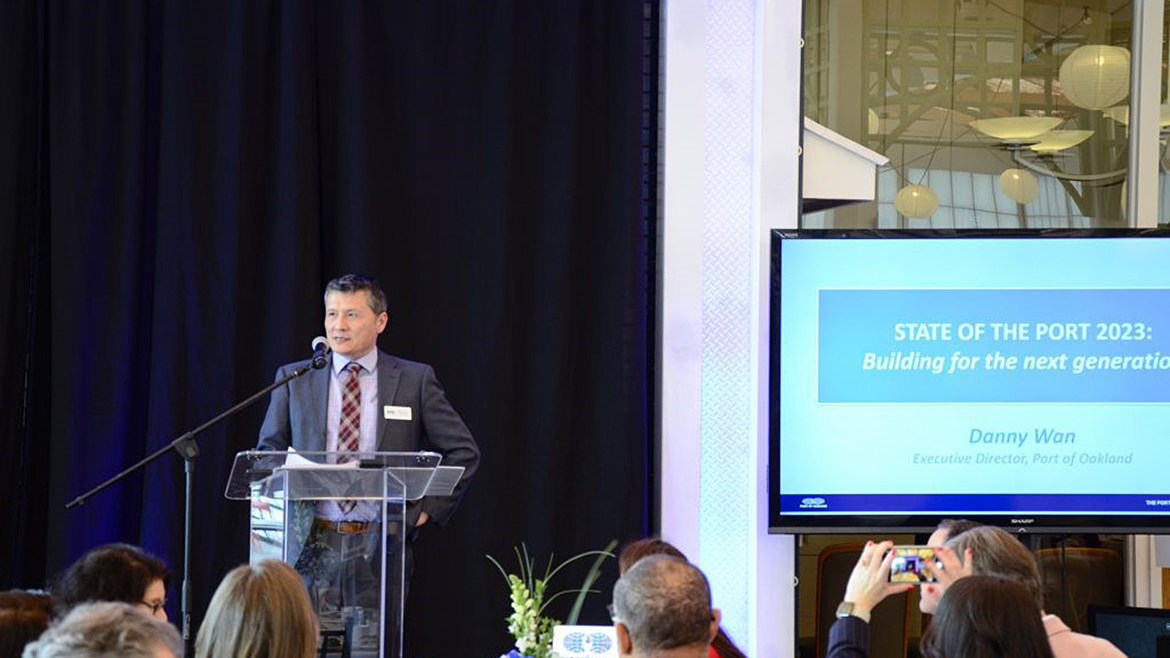 Port of Oakland Executive Director Danny Wan delivers State of the Port 2023: Building for the next generation. Image courtesy of Port of Oakland.
Port of Oakland Executive Director Danny Wan delivers State of the Port 2023: Building for the next generation. Image courtesy of Port of Oakland.
A vast majority of containers sailing from the Port of Oakland are heading to Asia – China and Japan specifically.
“Oakland is the last port of call for many Asian vessels on their westbound voyage. Everything, whether its fresh produce, whether fresh proteins, everything with shortened shelf life wants to get on the boat at the last possible minute. It pushes a lot of the agricultural commodities, which are normally perishable, to the forefront,” said Jason Dreisbach, owner of Dreisbach Enterprises, a third-generation California logistics company, operating three facilities in the Oakland area.
Cold foods like pork and fresh produce are held anywhere from hours to a day or two at most, Dreisbach said.
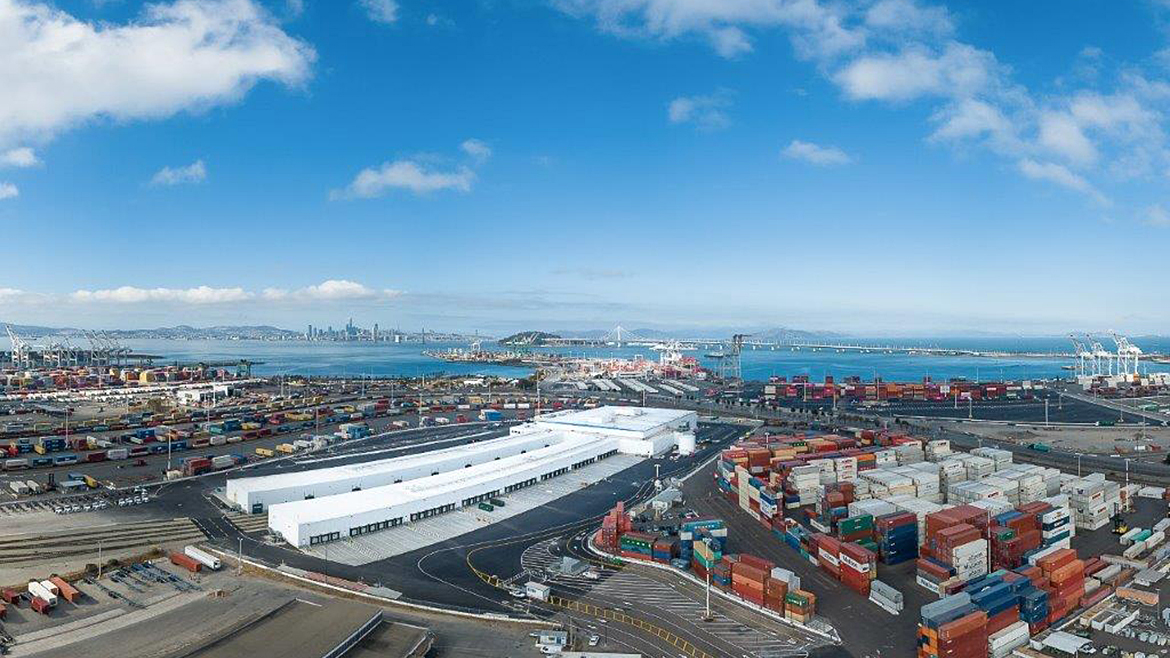 Opened in 2018, Lineage CoolPort is capable of shipping 1 million tons of beef and pork annually. Image courtesy Dresibach Cold Storage.
Opened in 2018, Lineage CoolPort is capable of shipping 1 million tons of beef and pork annually. Image courtesy Dresibach Cold Storage.
The company in 2018 partnered with Lineage Logistics to open CoolPort. Built on 26 acres, the 280,000-square-foot temperature-controlled distribution center is capable of shipping 1 million tons of beef and pork annually.
“It really is a unique facility,” Dreisbach said. “It’s as much a transload facility as it is a warehouse facility. We have about 90 dock doors, we can side 18 rail cars concurrently and we’ve got about 20,000 pallet positions worth of storage.”
Dreisbach said he has seen “minimal impacts” from ongoing labor negotiations.
“There’s also a willingness to invest in the refer infrastructure so we see the terminals layering on additional plug capacity in both terminals,” Dreisbach said. “There’s more of a focus on the refrigerated cargo here because it is a big driver of success here at the port.”



